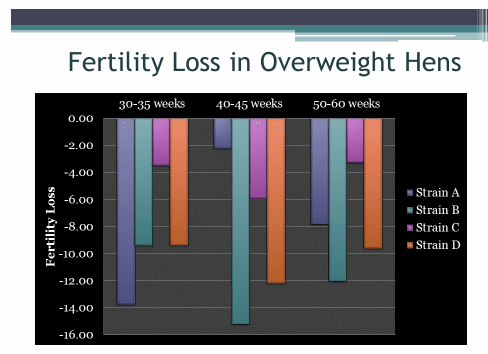Management and physiological factors that influence fertility and embryonic mortality in broiler breeders
Published: January 22, 2016
By: Dr. Keith Bramwell, PhD
Department of Poultry Science, University of Arkansas, USA
Evaluating fertility in commercial broiler breeder flocks has traditional been targeted at the male. This is supported by the fact that the majority of breeder fertility problems are the results of infrequent mating. There are incidences of fertility problems being the result of physiological problems during rearing and development, however most are a results of infrequent mating. Studies were conducted to evaluate behavioral characteristics associated with mating in modern broiler breeder flocks. And while the incidence of courtships behavior is dramatically reduced in our modern broiler breeder, this factor alone does not seem to effect fertility in a negative manner. However, in reference to the female, previous research has shown variation in the ability of individual broiler breeder hens to become fertilized. This variability is consistent to specific hens throughout their reproductive life.
A series of studies were designed to evaluate the physiological capacity of different strains of Broiler Breeder hens to become fertilized under conditions of age and body weight. Two hundred pullets from each strain of broiler breeders were obtained from a commercial hatchery and reared into production according to industry standards. At 21 weeks of age, birds were light stimulated and separated into one of two groups; either at or below target weight (C), or heavy or above target weight (H) and housed in individual cages. Heavy birds (H) were maintained at +300 grams as compared to the C group. At 30 weeks of age hens were artificially inseminated with 100 million spermatozoa in a 0.05cc volume from a pooled semen sample. Inseminations continued at five week intervals until 60 weeks of age. All eggs were collected daily to determine fertility and sperm penetration of the germinal disc by day post-insemination. Values were analyzed by breeder hen strain and body weight group until the cessation of sperm activity was determined with the effect of age determined from each group through the duration of the study.
Results indicate that each C group had higher weekly egg production values as compared to the corresponding H groups. While fertility varied by age, the C group had consistently better fertility and duration of fertility as compared to the H groups as can be seen in the figure below. Results indicate that body weight has a significantly detrimental effect on fertility and sperm penetration values in most breeder hen strains regardless of age. When managing a breeder flock, maintaining the hen body weight and fleshing within the primary breeder recommended guidelines will enhance the ability of the breeder hens to become fertilized.
A series of studies were designed to evaluate the physiological capacity of different strains of Broiler Breeder hens to become fertilized under conditions of age and body weight. Two hundred pullets from each strain of broiler breeders were obtained from a commercial hatchery and reared into production according to industry standards. At 21 weeks of age, birds were light stimulated and separated into one of two groups; either at or below target weight (C), or heavy or above target weight (H) and housed in individual cages. Heavy birds (H) were maintained at +300 grams as compared to the C group. At 30 weeks of age hens were artificially inseminated with 100 million spermatozoa in a 0.05cc volume from a pooled semen sample. Inseminations continued at five week intervals until 60 weeks of age. All eggs were collected daily to determine fertility and sperm penetration of the germinal disc by day post-insemination. Values were analyzed by breeder hen strain and body weight group until the cessation of sperm activity was determined with the effect of age determined from each group through the duration of the study.
Results indicate that each C group had higher weekly egg production values as compared to the corresponding H groups. While fertility varied by age, the C group had consistently better fertility and duration of fertility as compared to the H groups as can be seen in the figure below. Results indicate that body weight has a significantly detrimental effect on fertility and sperm penetration values in most breeder hen strains regardless of age. When managing a breeder flock, maintaining the hen body weight and fleshing within the primary breeder recommended guidelines will enhance the ability of the breeder hens to become fertilized.

Content from the event:
Related topics:
Authors:

Recommend
Comment
Share
22 de febrero de 2016
in strain A , variation is more at 30 to 35 weeks of age than 45 weeks , while i suspect body weight difference would be same so what's the reason ?
or it means with age body weight difference became irrelevant in this strain ? which looks illogical .
Recommend
Reply
Recommend
Reply

Would you like to discuss another topic? Create a new post to engage with experts in the community.
Featured users in Poultry Industry

Shivaram Rao
Pilgrim´s
PhD Director Principal de Nutrición y Servicios Técnicos de Pilgrim’s Pride Corporation
United States
United States







